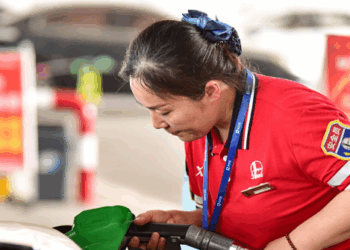In Solo Show, we ask Black artists to curate a list of three treasured works that they’ve encountered or made, and to reflect on how their practice connects to a broader art lineage.
Naima Green took her first darkroom class when she was 9 years old. It was at the Harlem School of the Arts in New York, and that’s where she learned to make a pinhole camera out of cardboard. Now, the artist, 35, uses photography, film and sound to document queer life, often creating intimate portraits set in forests, on beaches and in everyday urban spaces. In a solo exhibition opening today at the International Center of Photography in New York, Green explores themes of motherhood and unconventional family-building through images of herself, her family and her community, some biographical and others semi-fictionalized. (In several of the self-portraits, Green appears with a prosthetic pregnant belly.) Here, she discusses her work and those by others that have influenced her since childhood.
The first work that inspired her
Romare Bearden’s “The Block” (1971)
Harlem, where I grew up, is such an important part of my visual and artistic memory. We used to have a reproduction of Romare Bearden’s “The Block” in my house. It was on the landing, so I saw it every time I walked up or down the stairs. It’s the first artwork that was seared into my mind. “The Block” is significant because of its vibrancy and multiplicity — it offers a look into many different stories at once. It shows the different layers of a city: all of the life happening, but also the moments of solitude. As a kid, I’d think, This is such an incredible world. I want my world to be this colorful and dynamic.
The post A Photographer’s Unconventional Vision of Pregnancy appeared first on New York Times.




